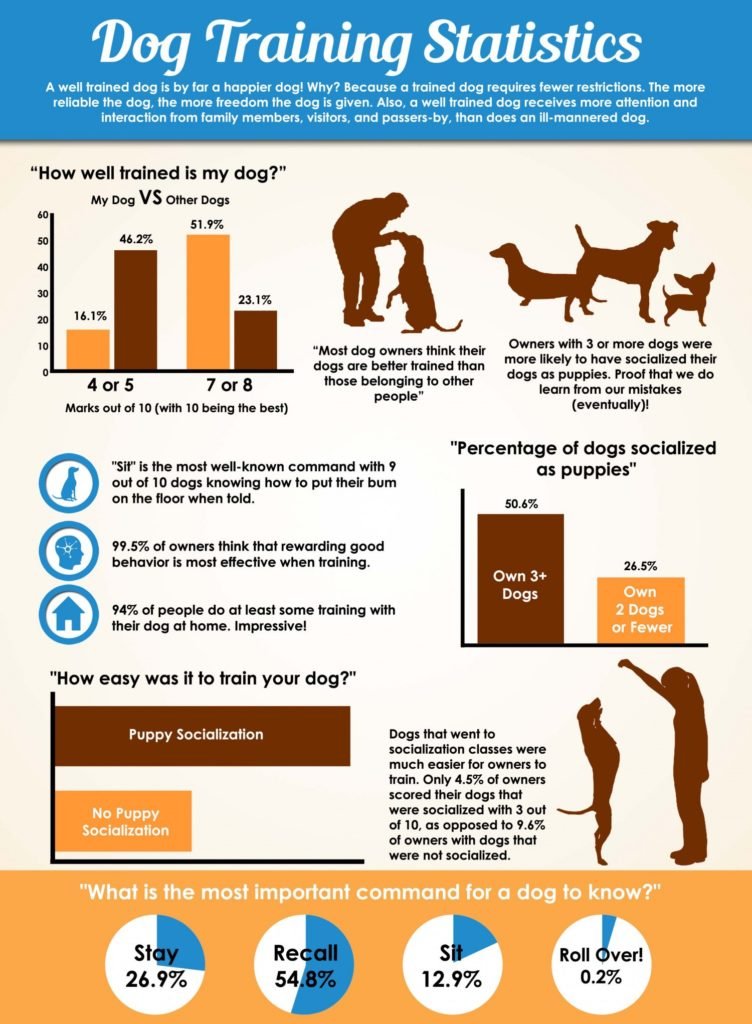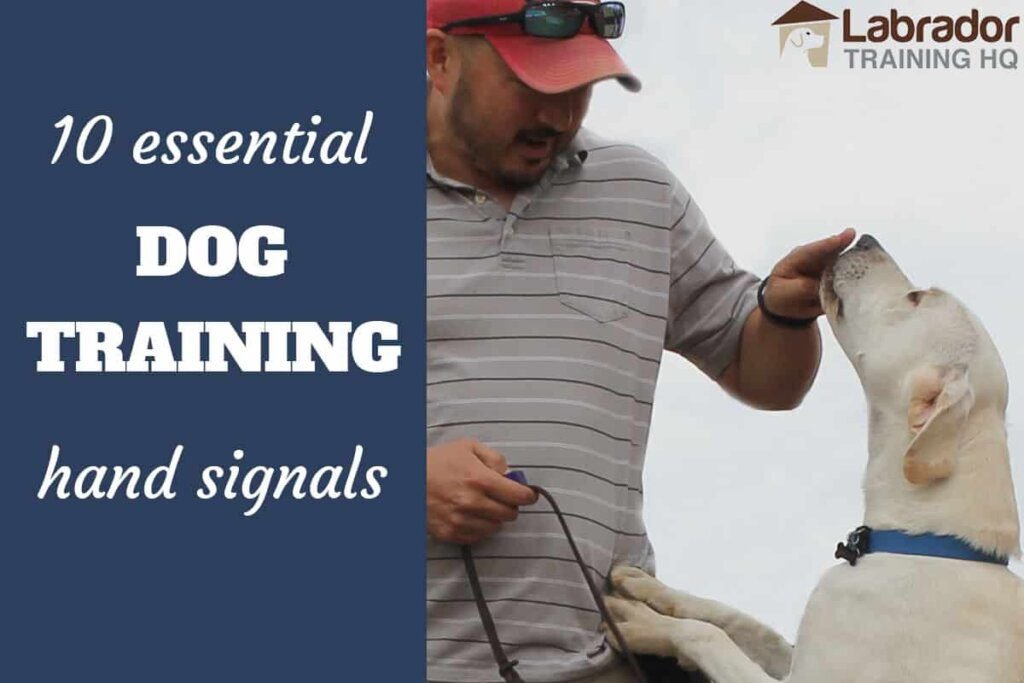Table of Contents
Are you a dog owner looking to improve your furry friend’s behavior and obedience? Look no further! In this article, you will discover 10 essential dog training techniques that will help you establish a strong bond with your canine companion. From basic commands like sit and stay, to more advanced tricks like heel and fetch, these techniques are designed to promote positive reinforcement, consistent guidance, and effective communication between you and your beloved dog. Get ready to embark on an exciting journey of training and watch as your dog transforms into a well-behaved and happy pet.
Positive Reinforcement
Positive reinforcement is a highly effective method of training dogs by rewarding desired behaviors. This approach focuses on encouraging your dog to repeat behaviors through the use of rewards such as treats and praise. By using positive reinforcement, you can strengthen the bond between you and your furry friend while teaching them important skills and good manners.

Reward-based Training
Reward-based training involves using positive reinforcement to reward your dog for displaying the desired behavior. This can be done by giving them a treat, praising them enthusiastically, or providing them with a favorite toy. By associating these rewards with good behavior, your dog will be motivated to continue behaving in a positive way.
Clicker Training
Clicker training is a popular method that relies on the use of a small handheld device called a clicker. The clicker emits a distinct sound that serves as a marker to signal the exact moment your dog performs the desired behavior. This technique allows for precise timing and helps your dog understand which behavior is being rewarded.
Treats and Praise
Using treats and praise as rewards is an excellent way to reinforce positive behavior in your dog. When your dog successfully performs a command or a desired behavior, immediately provide verbal praise and a tasty treat. This combination of positive reinforcement creates a positive association and motivates your dog to continue behaving well.
Obedience Training
Obedience training is an essential aspect of dog training that teaches your pup basic commands and good manners. A well-trained dog is a joy to be around and can enjoy a greater level of freedom and safety.
Teaching Basic Commands
Teaching your dog basic commands is crucial for their safety and well-being. Commands such as “sit,” “stay,” “lie down,” “come,” and “heel” are essential for your dog to understand and obey. By using positive reinforcement techniques, you can teach your dog these commands effectively and ensure they respond promptly when called upon.
Sit
“Sit” is often one of the first commands taught and is a fundamental behavior for your dog to master. To train your dog to sit, hold a treat above their head, then move it slowly backwards. As your dog follows the treat with their eyes and nose, their natural instinct will be to sit. As soon as their bottom touches the ground, give them the treat and praise them.
Stay
The “stay” command is crucial for keeping your dog safe in various situations. To teach your dog to stay, start by having them sit. With your hand open, palm facing them, say “stay” in a calm but firm tone. Take a step back and reward them with a treat for maintaining the position. Gradually increase the distance and duration of the stay, always rewarding them for successful compliance.
Lie Down
“Lie down” is another important command that promotes calm behavior and helps prevent jumping or excessive excitement. Begin by commanding your dog to sit. With a treat in your hand, lower it to the ground and guide your dog’s nose down, encouraging them to lie down. Once they are in the down position, reward them with the treat and praise.
Come
The “come” command ensures your dog comes to you when called, providing you with control and preventing them from getting into potentially dangerous situations. Start by kneeling down, holding out your hands, and encouraging your dog to come to you. Use an enthusiastic tone and reward them with a treat and praise when they reach you. Gradually increase the distance and distractions over time.
Heel
Heel training teaches your dog to walk calmly and obediently beside you without pulling on the leash. Begin by positioning your dog on your left side, holding the leash in your right hand. Start walking, encouraging your dog to walk closely beside you. Reward them with treats and praise for staying in the correct position. Consistency and positive reinforcement are key to successful heel training.
House Training
House training, also known as potty training or toilet training, is a crucial aspect of raising a well-behaved and clean dog. By establishing a routine, implementing crate training, and using positive reinforcement, you can successfully house train your furry friend.
Establishing a Routine
Establishing a routine is essential for successful house training. Take your dog outside to their designated potty area first thing in the morning, after meals, before bedtime, and at regular intervals throughout the day. Consistency is key, as it helps your dog understand when and where they should eliminate.

Crate Training
Crate training is a valuable tool for house training your dog. Dogs have a natural instinct to keep their den clean, and a properly introduced crate serves as their den. Ensure the crate is appropriately sized for your dog, and make it a comfortable and inviting space. Use positive reinforcement by providing treats or toys when your dog enters the crate, and gradually increase the amount of time they spend inside.
Rewarding Appropriate Elimination
When your dog eliminates in the desired location, immediately reward them with praise and treats. This positive reinforcement helps your dog associate going potty in the designated area with good things, encouraging them to repeat the behavior in the future.
Avoiding Punishment
It’s important to avoid punishment when house training your dog. Punishing your dog for accidents can create fear and anxiety, making the house training process more challenging. Instead, focus on positive reinforcement and consistency, rewarding your dog for their successes and redirecting them when accidents occur.
Leash Training
Leash training is essential for both your dog’s safety and your enjoyment of walks together. Proper leash training allows you to have control over your dog’s movements and ensures that your walks are enjoyable and stress-free.
Choosing the Right Equipment
Selecting the right equipment for leash training is crucial. Choose a sturdy and comfortable leash that is appropriate for your dog’s size and strength. Additionally, consider using a harness instead of a collar, as it distributes pressure more evenly and reduces the risk of injury. Gradually introduce your dog to the leash and equipment, allowing them to become comfortable and associate it with positive experiences.
Positive Leash Walking
Positive leash walking involves teaching your dog to walk calmly and politely on a leash without pulling or lunging. Start by keeping your dog on a short leash and walking at a slow pace. When your dog walks beside you without pulling, reward them with treats and praise. Consistency and positive reinforcement will help your dog understand the desired behavior.

Teaching Loose Leash Walking
Loose leash walking is the goal of leash training, where your dog walks beside you without tension on the leash. To teach loose leash walking, use treats and positive reinforcement to reward your dog for walking without pulling. If your dog starts to pull, stop walking and wait. When they return to your side with a loose leash, continue the walk and reward them. Practice this consistently to reinforce the behavior.
Addressing Reactivity
If your dog displays reactive behavior, such as barking or lunging at other dogs or people, it’s important to address it during leash training. Take a step back and gradually expose your dog to the triggers at a distance, rewarding calm behavior. Work with a professional trainer if needed to create a training plan specific to your dog’s reactivity.
Socialization
Socialization is the process of exposing your dog to different environments, people, and animals to help them develop confidence and positive social behavior. Proper socialization is important for preventing fear and aggression, helping your dog become a well-rounded and friendly companion.
Exposing Dogs to Different Environments
Expose your dog to various environments early on, gradually introducing them to different sounds, sights, and experiences. Start with calm environments and gradually progress to busier places. This exposure helps your dog become comfortable and confident in different situations.
Introducing Them to Various People and Animals
Introduce your dog to a variety of people, including different ages, genders, and ethnicities. Encourage positive interactions by having people offer treats, toys, or praise. Similarly, introduce your dog to other friendly and well-behaved dogs, allowing them to interact and play under supervision.
Positive Interactions
Ensure that all interactions during socialization are positive and rewarding. Reward your dog for calm and appropriate behavior, and avoid overwhelming them with too much stimulation too soon. Gradual exposure, positive reinforcement, and a calm and supportive environment are vital for successful socialization.

Preventing Fear and Aggression
Proper socialization plays a significant role in preventing fear and aggression in dogs. Early exposure to various environments, people, and animals helps your dog develop confidence and positive social behaviors. If your dog shows signs of fear or aggression, seek guidance from a professional trainer or behaviorist to address these issues appropriately.
Crate Training
Crate training is not only useful for house training, but it also provides your dog with a safe and secure space that they can call their own. By creating a positive association with the crate and gradually introducing it, your dog can see the crate as a comfortable retreat.
Creating a Positive Association
To create a positive association with the crate, make it an appealing and inviting space for your dog. Place comfortable bedding, toys, and treats inside the crate. Encourage your dog to explore the crate and reward them with treats and praise for entering or spending time inside. Repeat this process until your dog willingly enters the crate without hesitation.
Gradual Introduction
The introduction to the crate should be done gradually. Start by leaving the crate door open and allowing your dog to explore it at their own pace. Once they are comfortable entering and exiting, begin closing the door for short periods of time while you are present. Gradually increase the duration, ensuring your dog remains calm and relaxed throughout.
Teaching Manners Inside the Crate
Teach your dog good manners inside the crate by encouraging calm behavior when they are inside. Only open the crate door when your dog is calm and not attempting to rush out. Reinforce this calm behavior with treats and praise. This helps your dog understand that calm behavior is rewarded and desired.
Using the Crate as a Safe Space
The crate can serve as a safe space for your dog, providing them with a quiet and secure area to retreat to when needed. Never use the crate as a form of punishment, but rather as a positive space where your dog can relax and feel safe. Provide them with treats or toys inside the crate, and always keep the door open so they can enter and exit freely.
Clicker Training
Clicker training is a powerful and effective method that uses a clicker as a marker to reinforce desired behaviors. By teaching your dog to associate the sound of the clicker with rewards, you can communicate more precisely and shape complex behaviors.

Teaching Dogs to Associate the Clicker with Rewards
To teach your dog the association between the clicker and rewards, begin by clicking the device followed immediately by giving your dog a treat. Repeat this process, clicking and rewarding, until your dog makes the connection that the clicker sound signals a reward is coming. Once they understand this association, the clicker can be used during training to mark the precise moment they perform the desired behavior.
Timing and Consistency
Timing is essential in clicker training. The clicker must be used immediately after your dog performs the desired behavior to effectively mark it. Consistency is also crucial, as the clicker must always be followed by a reward. The clicker should be used consistently in training sessions to maintain clarity and reinforce the desired behaviors.
Shaping Behaviors
Clicker training allows for the shaping of complex behaviors by breaking them down into smaller, manageable steps. Start by rewarding your dog for any behavior that even remotely resembles the desired behavior. Gradually increase the criteria for the behavior, rewarding only when your dog meets the next step of the desired behavior. This gradual shaping process helps your dog understand and perform complex behaviors.
Advanced Training Techniques
Clicker training can be used for various advanced training techniques, such as teaching tricks or even obedience routines. By using the clicker as a precise marker, you can shape behaviors and create clear communication with your dog. Advanced clicker training techniques challenge your dog mentally and provide both mental and physical stimulation.
Distraction Training
Distraction training focuses on building your dog’s focus and impulse control in various environments. By gradually introducing distractions and redirecting your dog’s attention, you can train them to remain focused and responsive even in challenging situations.
Building Focus and Impulse Control
Building your dog’s focus and impulse control is essential for their safety and well-being. Start training in a distraction-free environment and gradually increase the level of distractions over time. Use treats, toys, or a clicker to reward your dog for maintaining focus and resisting impulses. With consistent training, your dog will become more skilled at ignoring distractions and staying attentive to you.
Introducing Distractions Gradually
When training your dog, introduce distractions gradually to prevent overwhelming them. Begin with mild distractions, such as toys or low-level noises, and reward your dog for ignoring them and maintaining focus on you. Gradually increase the difficulty by adding more challenging distractions, such as food or other dogs. This method allows your dog to build their focus and impulse control skills at a pace they can handle.
Redirecting Attention
If your dog gets distracted during training, immediately redirect their attention back to you. Use treats, toys, or a clicker to regain their focus and reward them for refocusing on you. Consistency is key, as redirecting attention and rewarding focus helps your dog understand that staying attentive to you is more rewarding than the distractions.
Proofing Commands in Different Environments
Proofing commands in different environments is a crucial step in distraction training. Practice commands and behaviors in various locations and situations to ensure that your dog can perform reliably, regardless of distractions. Start in a quiet environment and gradually progress to busier areas, always rewarding your dog for successfully following commands.
Problem Behavior Management
Sometimes, dogs may develop problem behaviors that require management and correction. By identifying and understanding these behaviors, implementing corrective techniques, and using positive reinforcement to replace unwanted behaviors, you can address and manage problem behaviors effectively.
Identifying and Understanding Problem Behaviors
To manage problem behaviors, it’s essential to first identify and understand them. Common problem behaviors include barking, chewing, jumping, digging, or aggression. Determine the root cause of these behaviors, such as fear, boredom, or seeking attention. Understanding the underlying cause helps you address the behavior appropriately.
Implementing Corrective Techniques
Implement corrective techniques carefully and consistently to address problem behaviors. For example, to discourage jumping, ignore your dog when they jump up and reward calm behavior instead. To discourage chewing, provide appropriate chew toys and redirect your dog’s attention to them when they start chewing on inappropriate items. Avoid using punishment, as it can exacerbate the problem behavior or create fear and anxiety in your dog.
Using Positive Reinforcement to Replace Unwanted Behaviors
Replace unwanted behaviors with desired ones by using positive reinforcement. For instance, if your dog jumps up to greet visitors, teach them to sit instead. Reward your dog for sitting calmly when people approach, and gradually fade out the treats as the behavior becomes consistent. Consistent positive reinforcement helps your dog understand which behaviors are desired and leads to long-term behavior change.
Seeking Professional Help if Necessary
For severe or complex problem behaviors, seeking the help of a professional dog trainer or behaviorist is highly recommended. They can provide expert guidance, develop a tailored training plan, and address any underlying issues contributing to the problem behavior. Professional help ensures that both you and your dog receive the support needed to overcome challenging behaviors.
Off-Leash Training
Off-leash training allows your dog to enjoy freedom while maintaining their safety and responsiveness to commands. With proper safety precautions, teaching a reliable recall command, building reliability with distractions, and fostering trust and responsiveness, you can safely enjoy off-leash adventures with your furry companion.
Safety Precautions
Before allowing your dog off-leash, ensure that you are in a safe and secure area. Utilize a fenced yard or consider using a long-line leash to provide additional control. It’s important to be familiar with any potential hazards or dangers in the environment and take precautions accordingly.
Teaching Recall Command
Teaching a reliable recall command is crucial for off-leash training. Start by practicing the recall command in a low-distraction environment, using treats or toys as rewards. Gradually increase the level of distractions and reinforce the recall command consistently. Practice regularly, ensuring that your dog understands to return to you reliably when called.
Building Reliability with Distractions
Building reliability with distractions is an essential part of off-leash training. Gradually introduce distractions, such as other dogs, people, or enticing scents, while practicing the recall command. Reward your dog for returning to you despite the distractions. This process helps your dog build impulse control and responsiveness, ensuring a reliable recall even in challenging situations.
Trust and Responsiveness
Building trust and responsiveness is key to successful off-leash training. By consistently rewarding your dog for obeying commands and focusing on you, you strengthen the bond and build trust. Be patient, supportive, and use positive reinforcement to foster a strong relationship with your dog.
In conclusion, dog training plays a vital role in shaping your dog’s behavior and ensuring their well-being. Positive reinforcement, obedience training, house training, leash training, socialization, crate training, clicker training, distraction training, problem behavior management, and off-leash training are all essential techniques for raising a well-behaved and happy dog. By using these techniques with a friendly and consistent approach, you can build a strong bond with your furry friend and enjoy a lifetime of happiness together.



